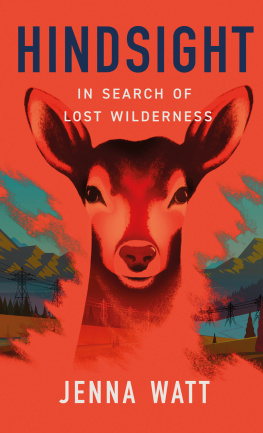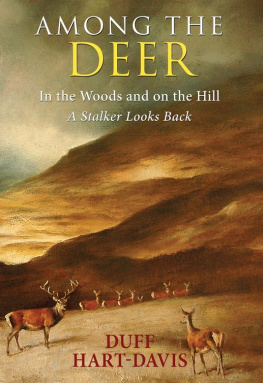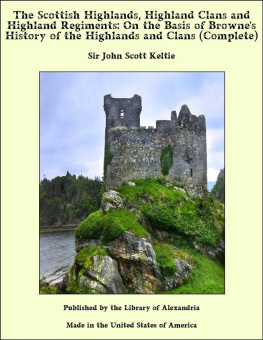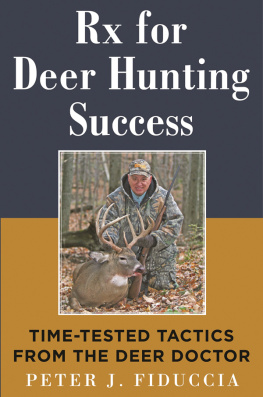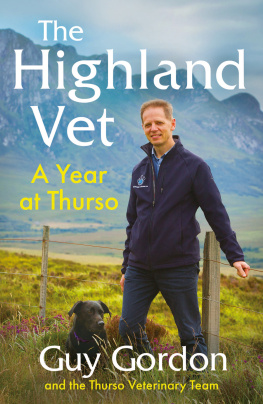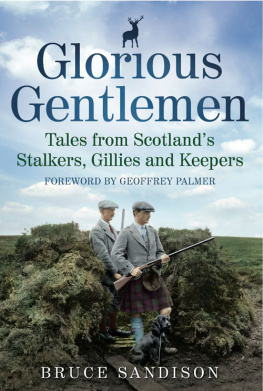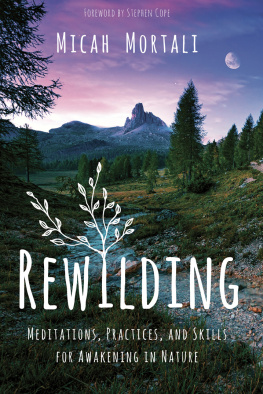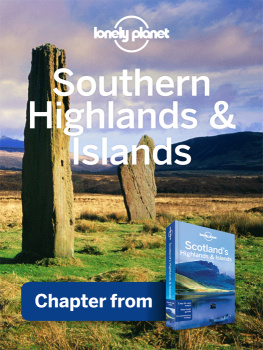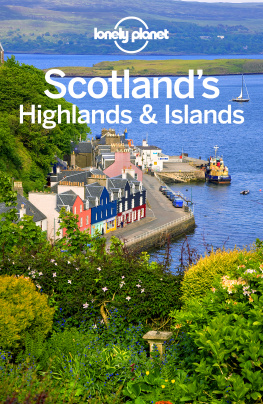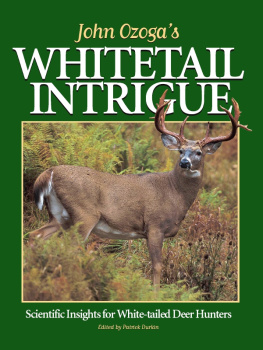Acknowledgements
This book began as a few short sentences that were originally copy for a new piece of theatre I had planned to develop during 2020. Within these sentences, my editor Jamie Crawford saw something much larger. With his support and guidance, I embarked on writing my first non-fiction book; it was larger in scale and scope than anything Id written before. Though the process was often challenging, the weekly word count saved me at a time when theatres were closed and creative projects postponed and cancelled. Thank you to Jamie and everyone at Birlinn for the opportunity and for giving me a way to navigate the pandemic.
This book would also not have been possible without the support of Nick Bone and Verity Leigh of Magnetic North Theatre. Their support, in the form of the artist attachment and Rough Mix Residency, meant I could participate in the deer cull and process the experience.
Im hugely grateful to Allan Macleod and ghillie Ethan, for taking me out on the hills of Corrour. Allans openness and expertise set me off on a journey to rediscover my cultural heritage, for which Ill be forever thankful. Kim Moore offered support and accompanied me to Banavie to look after Siouxsie. Thank you.
For their generosity and insights, Id like to thank Peter Cairns, Megan Rowland, Cathy Mayne and the women of Hind Sight, Sandra Engstrom, Jeremy Roberts, Louise Ramsay, Innes Macneill, Paul Lister, Sydney Henderson, Pip Gullett and Amelie Sumpter. Each of you patiently listened to my thoughts, worries, offered your perspectives and gave me the invaluable gift of a deepened relationship to Scotlands land, habitats and species.
Thanks to Joyce Gilbert and Ceit Langhorne, both of whom introduced me to the Cailleachan and encouraged me to go for a walk along the tops. And to Jamie Lorimer and David Overend, for facilitating the Bamff residency and allowing me to participate.
Last and most importantly of all, Id like to thank my friends and family for their patience, guidance and encouragement: my mother and father, Barry, Stewart, Chris, Jo, Helen, Rick, Louise, John and Angus Roxburgh.
1
The Stalk, Part One
I wont shoot her.
Its my first thought as I wake up.
Reluctantly, I push back the warm duvet. I turn on the side light, lie back on the bed and stare at the ceiling. Take a moment to remember where I am in a canal cottage holiday rental in Banavie, near Fort William. Its early on a Friday morning in November 2019. I didnt get much sleep worst-case scenarios continually played out in my dreams, and I woke up every hour thinking Id slept in. My stomach is tight with the knowledge of what the day holds. Today Ill be participating, for the first time, in Scotlands deer cull.
I take a deep breath, slowly exhale and push the heel of my hand into my diaphragm to bring some relief. I get up and dress in the layers of clothes I laid out last night. I gently open the bedroom door and tiptoe quietly down the old stairs. Siouxsie, my eighteen-month-old rescue dog, follows me into the kitchen, hoping for some semblance of her normal routine in this strange new place. The linoleum floor is freezing cold. I quietly potter about in my socks, making our breakfasts. Upstairs, in the other room, my friend sleeps. She agreed to come along and look after Siouxsie while I do the stalk. I imagine their day: pleasant walks along Neptunes Staircase in the crisp winter air and cuddles by the wood fire. I consider cancelling and staying with them instead, but its too short notice, Im here now. While the kettle boils, I take Siouxsie out into the garden. Its silent except for the gentle burble of water coming from the locks. I round the corner of the building and watch Siouxsie pad across the frost, leaving a trail of little paw prints as she does a slow patrol of the boundary fence. Everything is still. I take her for a quick walk along part of the canal, more for my benefit than hers. We pass through the back gate and onto the towpath, which sparkles with ice crystals. I can see my own breath in the cold air. The sky is a beautiful clear dark blue and still dotted with stars. Partially silhouetted against the sky, I can see the outline of Ben Neviss northwestern face. At 1,345 metres, it is Scotlands highest mountain. Against the dark blue, the first snow is visible on its rounded peaks, giving the impression of a thin place.
Ben Wyvis, another mountain, was visible from my family home, a constant on the horizon. For as long as I can remember, I appreciated the first snow on the ben, its reassuring appearance marking the onset of winter. Over the following weeks the snow line would gradually travel down its south face and spread across the Black Isle towards Inverness. On this November morning, it doesnt occur to me yet how the first snow will impact the day ahead.
Siouxsie and I return to the house and have our respective breakfasts. I sit at the table and consider how other people must behave on the morning of a stalk. I cant help but imagine middle-aged white men in Barbours, eating their cooked breakfasts, smiling and rubbing their hands together, looking forward to an invigorating day of sport on the hill; meanwhile, I sit alone, in a strange place, wondering why I thought this would be a good idea. I collect my lunch and thermos off the table and head out to defrost the car and load my gear. Sitting on the passenger seat in my tightly packed waterproof bag are my snacks, gaiters, a change of clothes, my digital recorder and my blue inhaler. Waiting for me at the estate is a hired rifle with ammo.
Dawn breaks, and I need to get on the road. My friend comes downstairs to say goodbye, scoops up Siouxsie and waves at me from the door. I wish I wasnt going alone, but the cost was too prohibitive to take someone with me. I wonder what state Ill be in when I return, whether it will have changed me in some way or whether Ill have gone through with it at all. I dont want to leave, but Im ready.
Its an adventure! I tell myself, but it does little to loosen the knot in my stomach.
In the months and weeks leading up to the stalk, Ive been growing more and more anxious. Some of this anxiety stems from the concern that the stalk might be too physically challenging, but its mainly about feeling pressured into taking the shot. I emailed a few gamekeepers when planning this trip to ask what would happen if I didnt go through with it. This was mostly met with dismissive assurances that they could set me up in a suitable shooting position. But the opportunity to shoot was never a concern it was my own resolve that I was worried about.
Ive been reading journal articles, books, government guidelines and reports on the subject of the deer cull. Ive even attended events where heated discussions around deer-management practices have arisen, usually amongst those same middle-aged white men. But I wondered whether the people writing these articles or those with strong opinions on cull numbers had ever necessarily participated in the deer cull themselves. I wanted to know what it was like to be on the hill, what it meant to undertake the cull. Id heard that the estate I was heading to was committed to meeting culling targets.
The deer cull in Scotland is administered by around 44 voluntary deer-management groups, normally made up of land managers, landowners and/or gamekeepers from estates or land holdings within a specific geographical area. Each DGM carries out an annual count of deer numbers across their location and agrees a cull target that takes into consideration the carrying capacity of the environment, compatibility with other land uses and the needs of the local economy. Some estates commit to keeping their deer numbers even lower per square kilometre if they have urgent objectives, such as tree regeneration. Nature Scot, previously Scottish Natural Heritage, is the public body that provides advice to the DGMs; it also conducts its own deer counts, targets, research and sometimes interventions. The cull itself is not a public activity the majority of culling is conducted by professional stalkers and, of course, by landowners and their guests on sporting estates.

